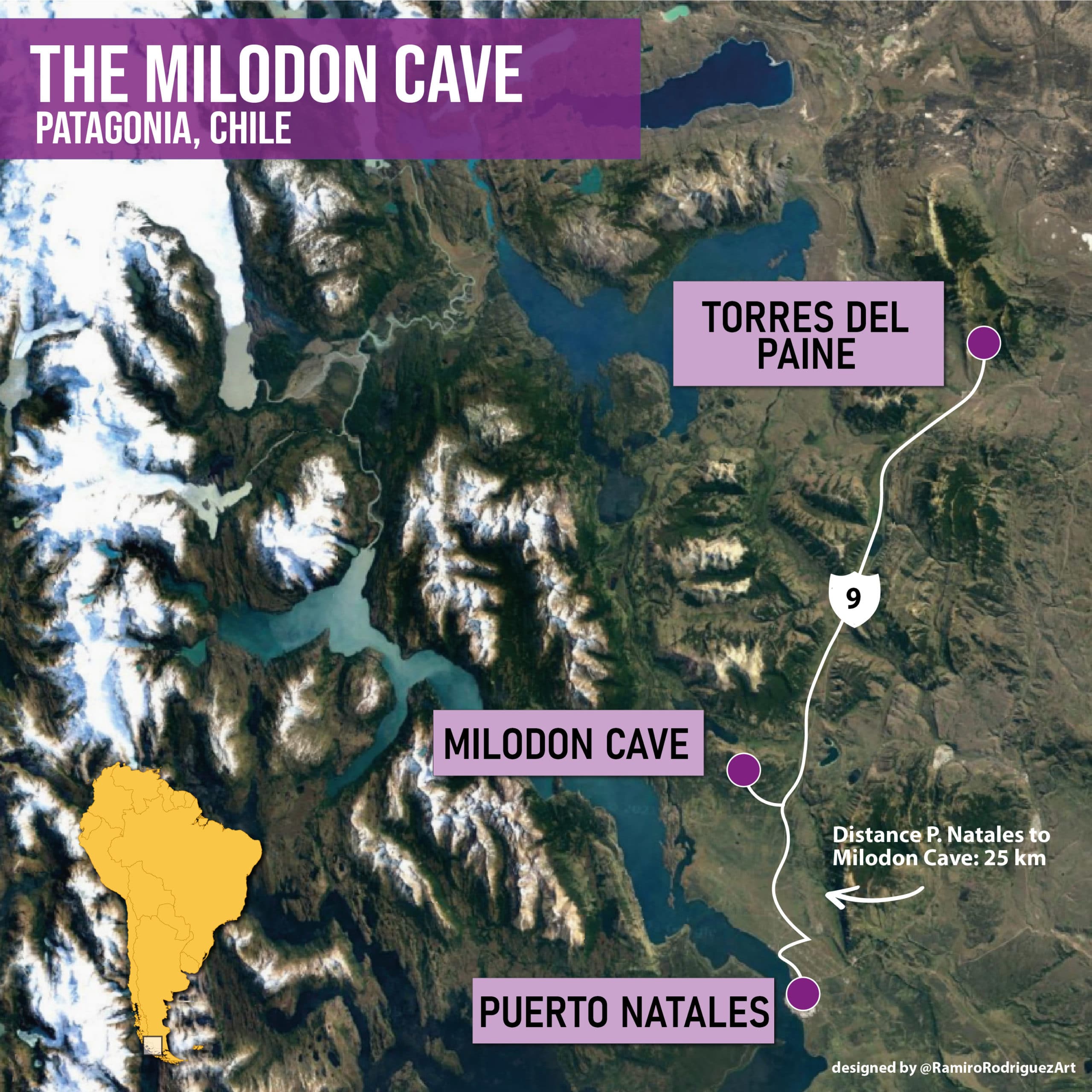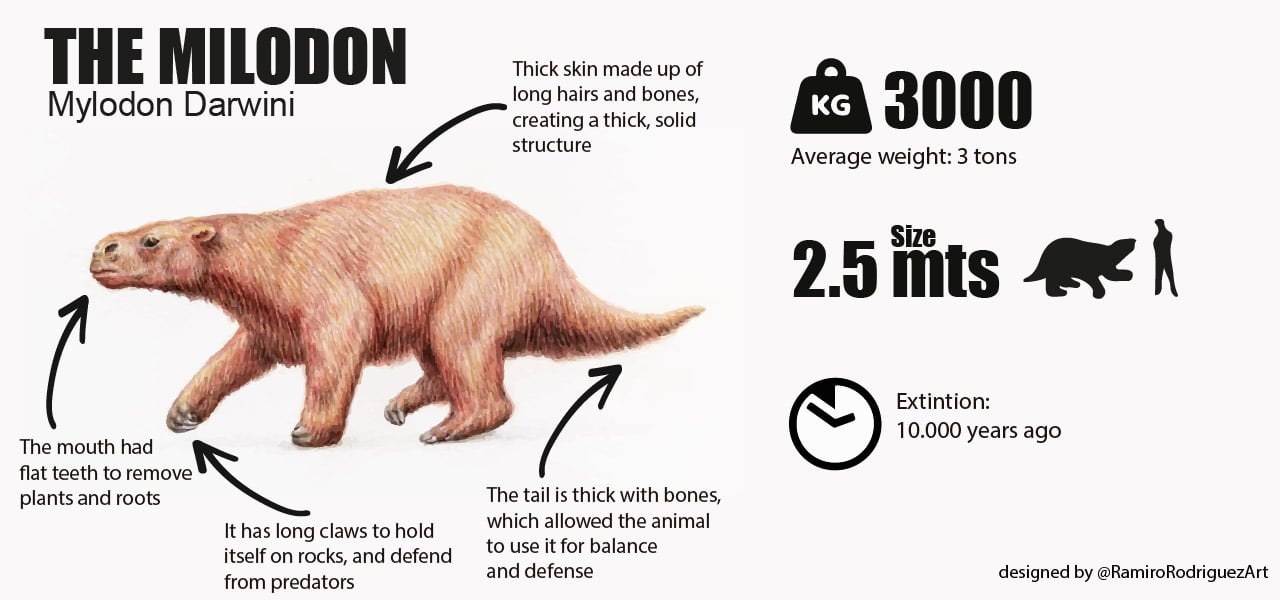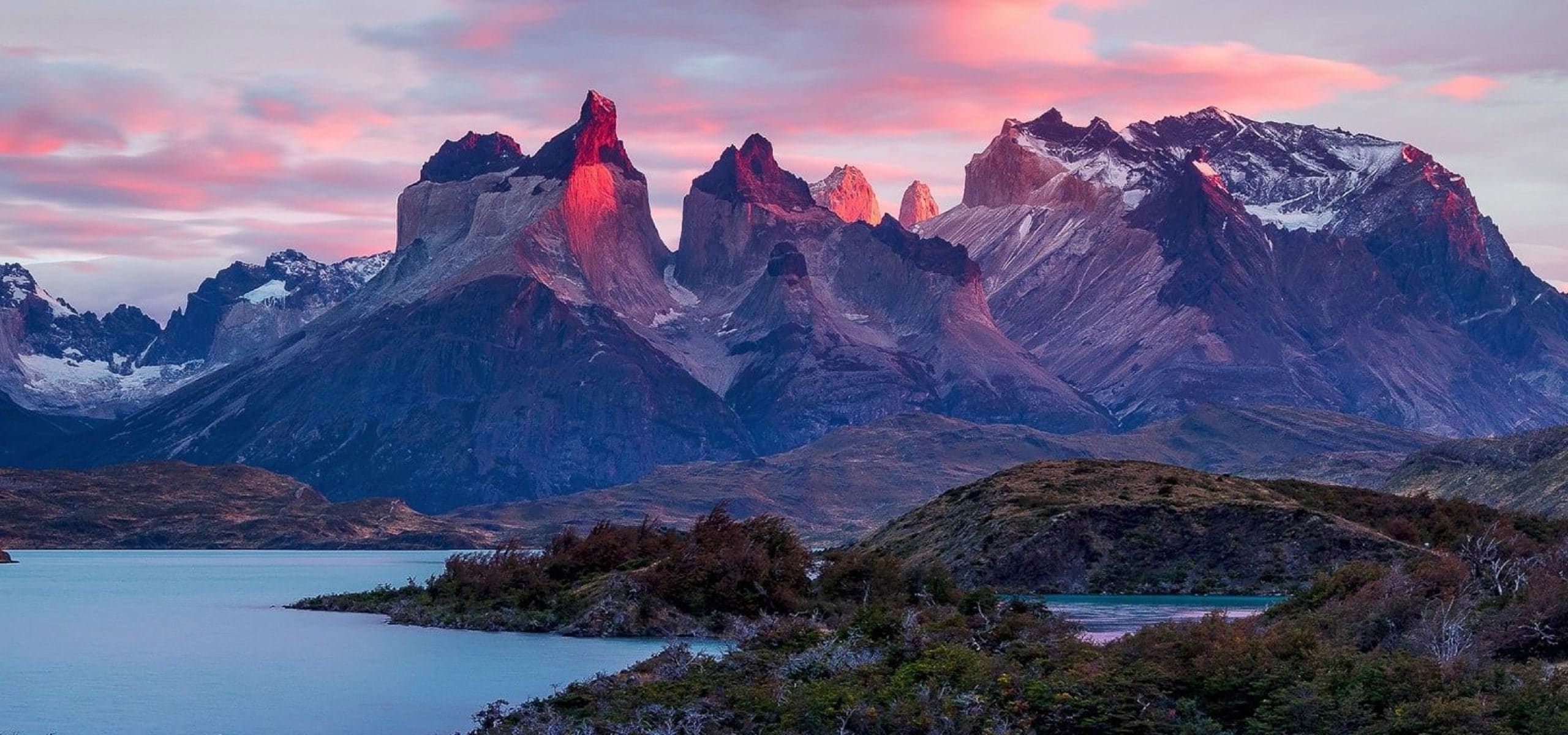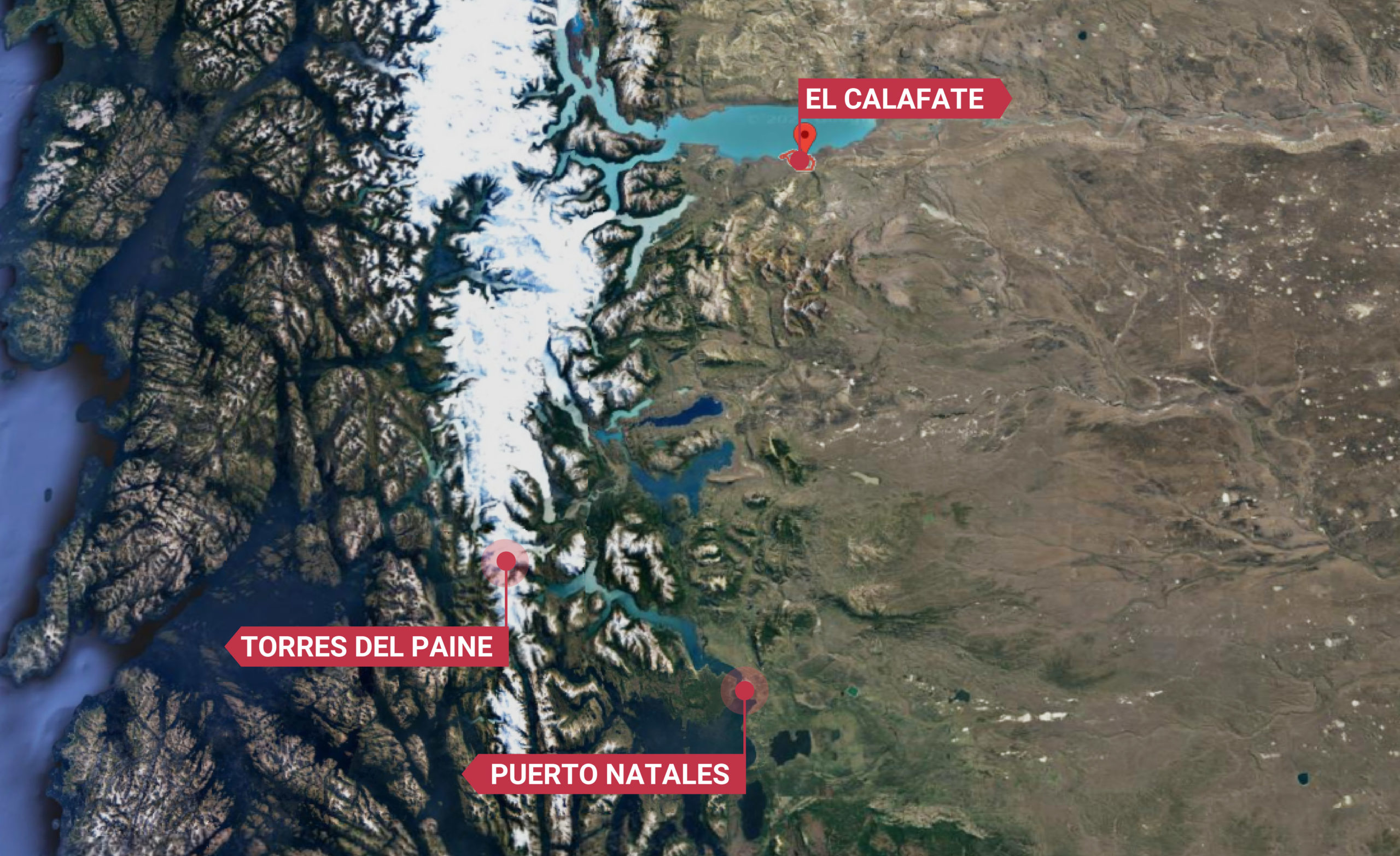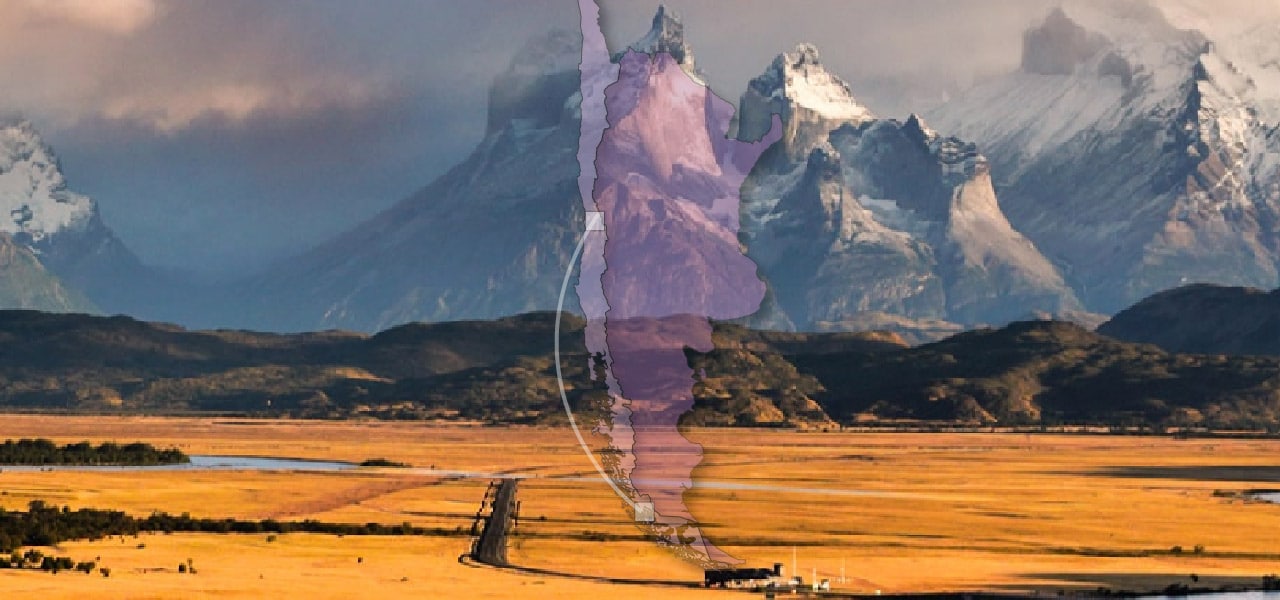The Milodon Cave
The Cueva del Milodon Natural Monument is located in the Province of Ultima Esperanza in the Magallanes and Chilean Antarctic Region, 25 km north of the city of Puerto Natales. It was created in 1993, as a Natural Monument Cueva del Milodon, joining the National System of Protected Wild Areas in Chile.
The unit stands out for the protection of mammalian fauna species such as: the culpeo fox, gray fox, quique, puma, wild cat and chingue. Among the birds the carancho, eagle, harrier, kestrel, vari, tiuque, tucúquere, thrush, carpenter, cachaña, thrush, loica, pitio, chincol, rayadito and condor. Regarding flora, forests of lenga, coigüe and ñire predominate, shrubs such as hard firewood, chaura, ciruelillo, calafate, michay, seven shirts, romerillo, murtilla and senecio.
The Cuevas del Milodon is a natural monument made up of three caves in the Southern Zone of Chile, where remains of myelodons, large herbivorous mammals that became extinct, probably at the end of the Pleistocene, were found.
Of the three caves, the largest and most important is located 150 meters above sea level and measures 30 meters high, 80 meters wide and 200 meters deep.
The Milodon Cave: a bit of history
The cave was discovered in 1895 by the German merchant seaman Hermann Eberhard while conducting a reconnaissance exploration of the lands that had been given to him in concession for the purpose of colonizing the Province of Ultima Esperanza. Inside the “Eberhard Grotto”, as the cave was called at that time, they found skin, bones and other remains of an extinct animal, the mylodon (Mylodon darwini), a large herbivore that probably became extinct late Pleistocene. They also found human skeletons, belonging to the Paleoindian culture which would have inhabited the cave 8000 years ago. Due to the well-preserved remains of the mylodon, mainly a piece of skin of approximately 1 m², Eberhard decided to take the remains to its nascent estancia, called Puerto Consuelo. In 1896, he received a visit from the Swedish geologist, geographer and polar explorer Otto Nordenskjöld, who after asking Eberhard for a piece of the skin, mistakenly classified it as belonging to the Glossotherium genus. It was Nordenskjöld who, during his visit to Buenos Aires, made this discovery known in Chilean Patagonia, and which in the following years generated a series of excavations, both scientific and pseudoscientific. A British expedition organized by the newspaper The Sun, under the command of Hesketh Prichard, tried unsuccessfully to find a living specimen.
The Milodon cave has a great tourist attraction, among others for the beautiful landscape that surrounds it and because it is located only 60 km south of the Torres del Paine National Park, which makes it a stop A must for those traveling to or from the park. In addition, at the entrance of the largest cave there is a replica of the animal, similar to a mylodon, built in 1978 by Harold Krusell at the request of the Sernatur. The monument is part of the route of the Route of the End of the World.
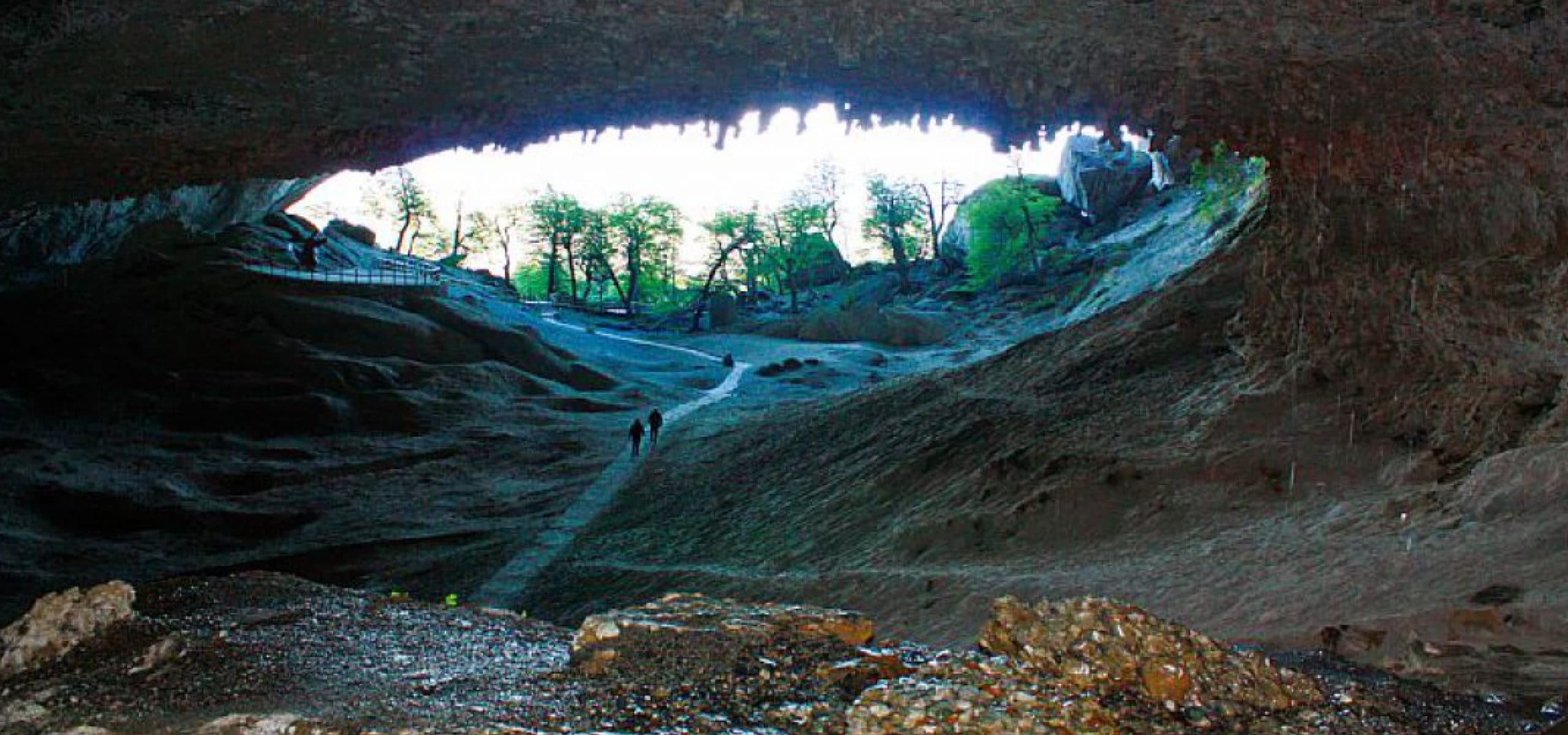
What is a Milodon?
The milodon is an extinct mammal ten thousand years ago, of great proportions and related to armadillos, anteaters and current sloths. It lived in the grasslands of southern Argentina and Chile, in Tierra del Fuego. Although archaeological remains have been found in the north of Chile, in Los Vilos. This cave originated in the last glacial expansion of the Quaternary, some twenty thousand years ago, as a result of the strong waves of a proglacial lake that would have eroded the shale that forms the rocky massif. According to Mateo Martinic, the discovery of the mylodon was made in an exploration by Hermann Eberhard, a German settler established in the Ultima Esperanza prairies in 1893. Eberhard, his son Hermann and Von Heinz, an English settler named Waldron, participated in the expedition. sheepdog Andrés or Teodoro Huesphers and Eberhard’s employee, Ricardo Krüger. The expedition was organized on the occasion of touring the natural accident that aroused curiosity in the inhabitants of the Puerto Consuelo ranch, owned by Eberhard. At the site, the explorers found at the entrance of the largest cave, about 80 meters wide by 200 meters long, a piece of skin with characteristics never seen before. It was covered with long hairs and had irregularly embedded ossicles. This piece was used as a trophy by the colonists, placing it in the room for the curious to see it. This finding began to attract international attention when the geologist Otto Nordenskjöld and the Argentine paleontologist Florentino Ameghino made academic publications on the matter. In relation to the extinction of the milodon, multiple hypotheses are pointed out, among which those that emphasize climate change, the fact that it has been hunted by the indigenous people of the territory or product of volcanic activity stand out.
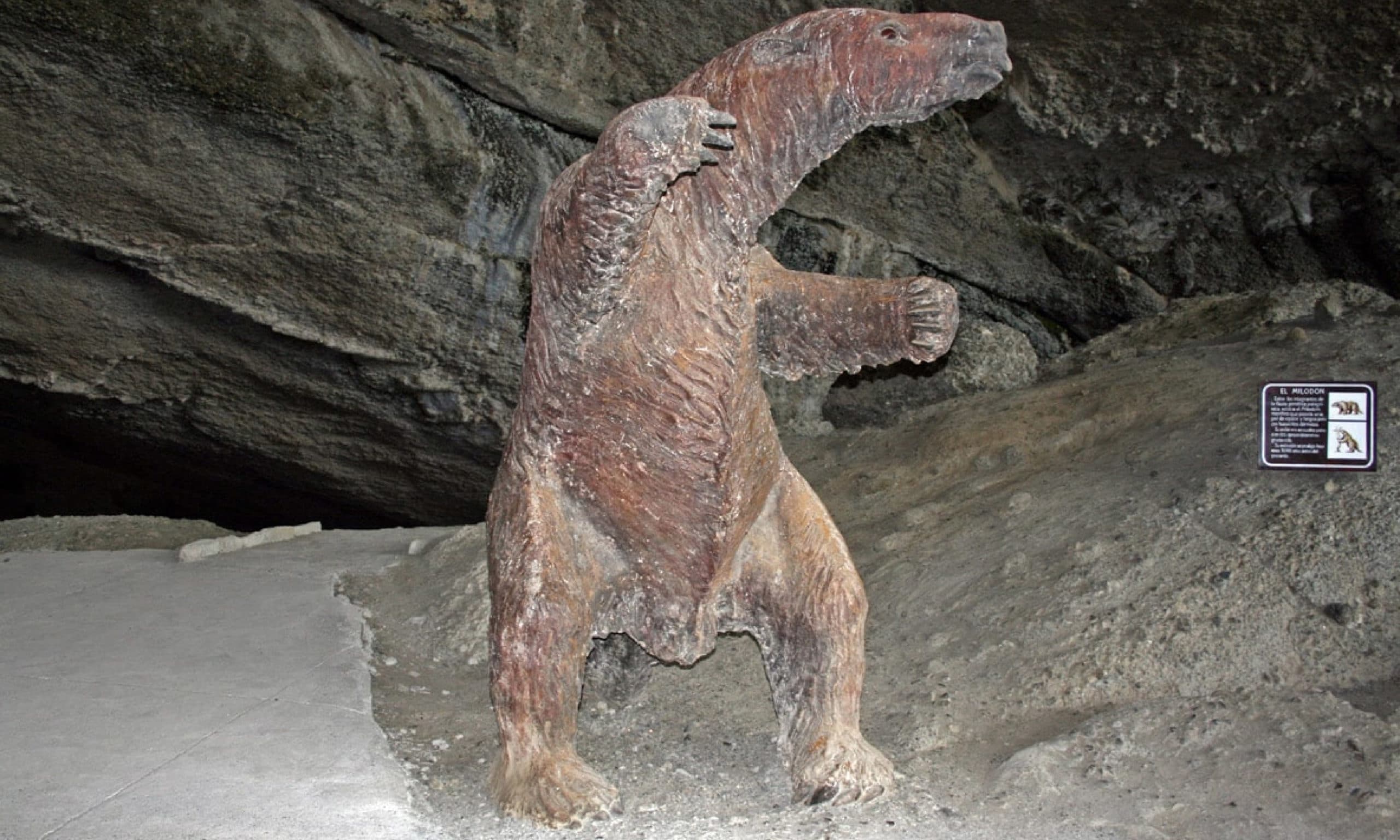
A short trekking in the Milodon Cave area
From the Cueva del Milodon, you can take a 4 km walk through low intensity paths of the reserve, passing through caves, Nothofagus forests, and stretches of rock. And in which we will learn more about the history of this unique site.
Difficulty level: Basic
Duration: 3 to 4 hours
Distance: 4 Km
The Cave of the Milodon: How to arrive?
The famous Cave of the Milodon is located 254 km northwest of Punta Arenas, 25 km northwest of Puerto Natales and 3 km north of Eberhard Fjord. It is located at the coordinates 51º 34 ’South Latitude and 72º 37’ West Longitude to be exact.
How to get there? Approximately 8 kilometers after leaving Puerto Natales, take the detour to the left, towards Puerto Prat, leaving this town take the path to the right at the first crossroads, 4 km further north you will find another crossroads, this time take the road on the left and traveling two more kilometers you will arrive at the Conaf nursery.
Land route by a paved road of 18 kilometers and 7 kilometers of gravel road, which is kept in good condition throughout the year. There is a variant along the route that connects Puerto Prat and Puerto Consuelo. Of course, it´s usually part of the full day visit to Torres del Paine National Park as it´s located on the way.
Milodon Cave: Location Map
Check the map to see the Milodon Cave:
